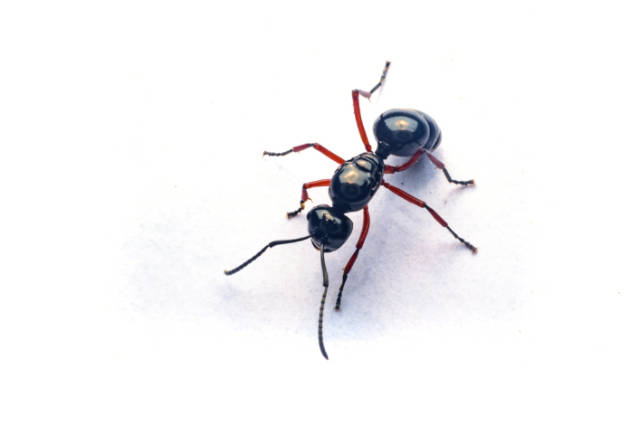Ants are one of the most common insects in the world, and there are many different kinds, each with its own traits and ways of acting. Carpenter ants and Pavement ants are two common types of ants that often get into homes and worry people who live there. Even though these ants are about the same size and look alike, their habits, where they live, and how they might affect homes are very different. In this piece, we’ll look at the main differences between Carpenter ants and Pavement ants to help homeowners spot and get rid of possible infestations.
Outward Appearance:
At first view, Carpenter ants and Pavement ants may look very similar, but when you look more closely, you can see that they have some small differences.
The Carpenter Ant:
Size: Carpenter ants are about 6 to 12 millimetres long, which is longer than most ants.
Colour: Most kinds are black, but some have reddish or yellowish colours.
Shape: Carpenter ants have a well-defined waist between their thorax and belly, which makes them look like they are made up of different parts.
Asphalt Ants:
Size: Pavement ants are a little bit smaller than other ants. They are between 2.5 and 4 millimetres long.
Colour: Most of the time, their bodies are dark brown to black, and their legs and antennae are lighter.
Shape of the body: Like Carpenter ants, Pavement ants have a divided body, but they may look less strong than Carpenter ants.
Habitats:
One of the biggest differences between these kinds of ants is where they like to live.
The Carpenter Ant:
Insects That Eat Wood: Carpenter ants are famous for being able to dig into wood to make their nests. They like to build their nests in trees, stumps, and other wooden structures that are damp or have been destroyed.
They may set up satellite colonies inside homes, especially in damp places like around leaking pipes, on roofs, or in crawl spaces that don’t get enough air flow.
Asphalt Ants:
Pavement ants are very good at living in cities, and their nests are often found in cracks and crevices in roads, driveways, and pavements.
Preferences for nesting: They also like to live close to houses, under rocks, and in the spaces between walls.
Preferences for feeding:
The food they like to eat is another important difference between these ant types.
The Carpenter Ant:
Proteins and Sugars: Carpenter ants eat a wide range of foods, including proteins and sugars. People know that they eat animals, plant juices, fruits, and food items from around the house.
Asphalt Ants:
Pavement ants love sweets and are especially drawn to sugary things. They will look for sweet things to eat, like syrups, honey, and bits of fruit.
Behavior:
Understanding how these two kinds of ants act can also help you tell them apart.
The Carpenter Ant:
Carpenter ants are mainly nocturnal, which means that they are most active at night.
Foraging Range: They can look for food and water up to 300 feet away from where they nest.
Asphalt Ants:
Pavement ants are busy during the day, especially when it is warmer, because they feed on food.
They usually look for food within a short distance of their nests, usually within 30 feet.
The effect on homes:
The most important thing for people to worry about is probably the damage these ants could do to their homes.
The Carpenter Ant:
Damage to buildings: Carpenter ants can cause a lot of damage to wooden buildings over time. They dig holes in the wood, which weakens the wood’s structure.
Asphalt Ants:
Even though pavement ants don’t hurt buildings, they can still be annoying when they come into homes looking for food.
Even though Carpenter ants and Pavement ants look similar, they live in different places, act in different ways, and have different effects on houses. Carpenter ants are known for their ability to damage wood and their preference for breeding in wet or damaged wood, which makes them a threat to buildings. sidewalk ants, on the other hand, are more of a nuisance pest. They like sweets and tend to live in cities, especially in cracks and crevices in sidewalk. Understanding these differences can help people figure out what kind of ant problem they have and take the right steps to get rid of them and stop them from coming back. If you have a lot of ants or they keep coming back, you should call a professional pest control service to get rid of them and protect your home.



